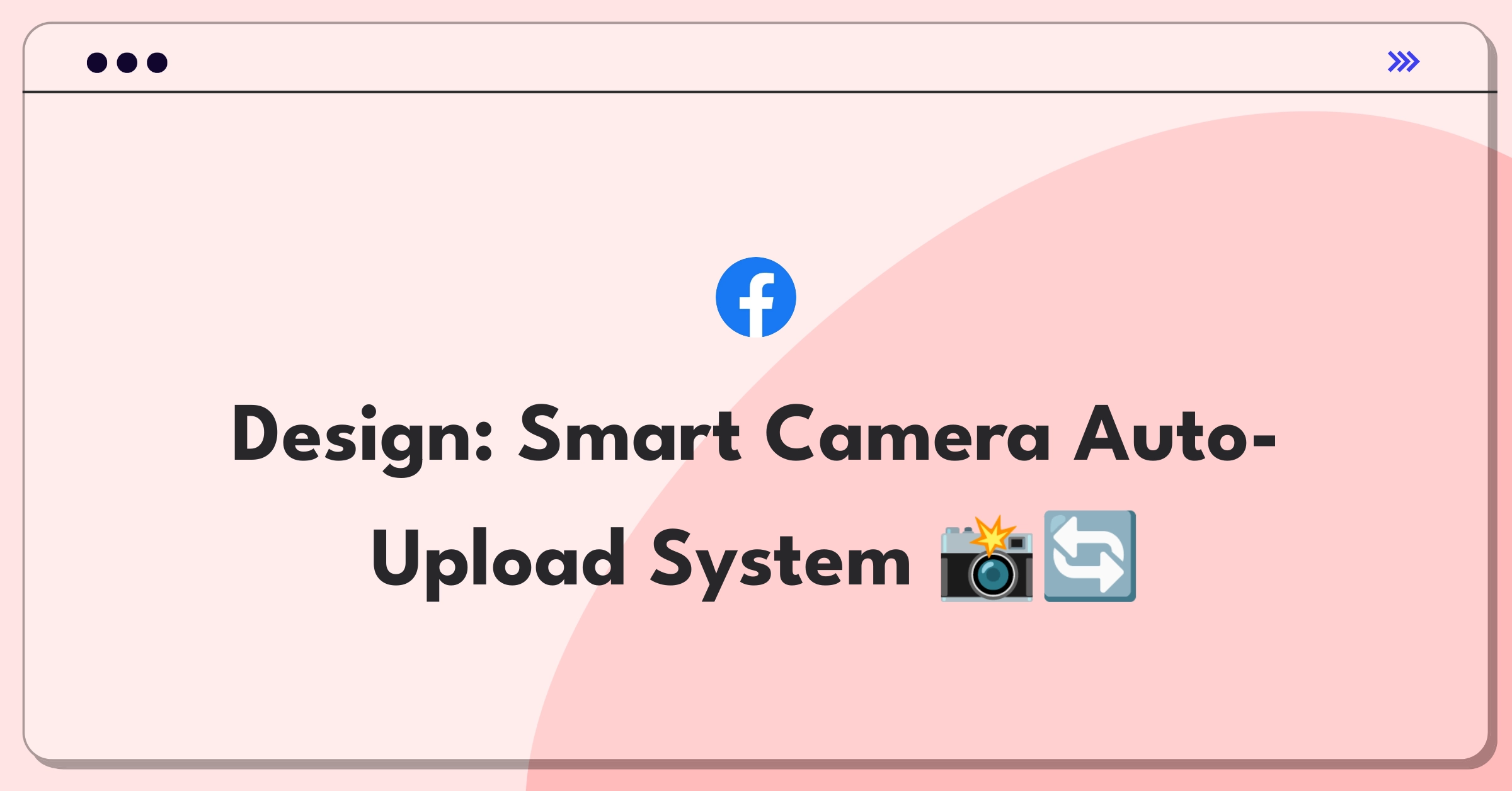Designing an Auto-Uploading Camera System for SmartCam Inc.
To design a camera that automatically uploads, we'll implement a cloud-connected system with real-time image processing, secure data transmission, and intelligent upload scheduling to optimize performance and battery life.
Introduction
The challenge is to design a camera system that automatically uploads captured images or videos without user intervention. This involves creating a seamless integration between hardware (the camera), software (image processing and upload management), and cloud infrastructure. Our goal is to deliver a user-friendly product that ensures reliable, secure, and efficient image uploads while managing battery life and network connectivity constraints.
I'll address this challenge by:
- Clarifying technical requirements
- Analyzing current state and challenges
- Proposing technical solutions
- Outlining an implementation roadmap
- Defining metrics and monitoring strategies
- Addressing risk management
- Discussing long-term technical strategy
Tip
Ensure the auto-upload feature enhances user experience without compromising device performance or data security.
Step 1
Clarify the Technical Requirements (3-4 minutes)
Key Technical Areas to Clarify:
Product Context: This aspect is crucial as it determines our technical approach. Let's assume this is a new product line, allowing us more flexibility in design choices.
Hypothetical answer: "We're developing a new line of smart cameras, giving us the opportunity to design the auto-upload feature from the ground up."
Impact: This allows us to implement cutting-edge technologies without being constrained by legacy systems.
Technical Constraints: Understanding hardware limitations is essential for designing an efficient auto-upload system.
Hypothetical answer: "The camera has a 3000mAh battery, 32GB local storage, and supports Wi-Fi and Bluetooth connectivity."
Impact: We'll need to optimize our upload algorithm to balance frequency and battery consumption.
Engineering Team Dynamics: This influences our development approach and timeline.
Hypothetical answer: "We have separate hardware and software teams with a history of successful collaboration."
Impact: We can parallelize development of hardware and software components, potentially accelerating time-to-market.
Security & Compliance: Critical for ensuring user trust and legal compliance.
Hypothetical answer: "We need to comply with GDPR and CCPA regulations for data protection."
Impact: We'll implement end-to-end encryption and user-controlled data management features.
Infrastructure: Determines our scalability and maintenance strategy.
Hypothetical answer: "We'll be using AWS for cloud services to leverage their global infrastructure."
Impact: We can utilize AWS's robust services for image processing, storage, and content delivery.
Tip
Based on these clarifications, we'll assume a new product line with modern hardware capabilities, strong team collaboration, strict security requirements, and cloud-based infrastructure.
Subscribe to access the full answer
Monthly Plan
The perfect plan for PMs who are in the final leg of their interview preparation
$99 /month
- Access to 8,000+ PM Questions
- 10 AI resume reviews credits
- Access to company guides
- Basic email support
- Access to community Q&A
Yearly Plan
The ultimate plan for aspiring PMs, SPMs and those preparing for big-tech
$99 $33 /month
- Everything in monthly plan
- Priority queue for AI resume review
- Monthly/Weekly newsletters
- Access to premium features
- Priority response to requested question


.png)